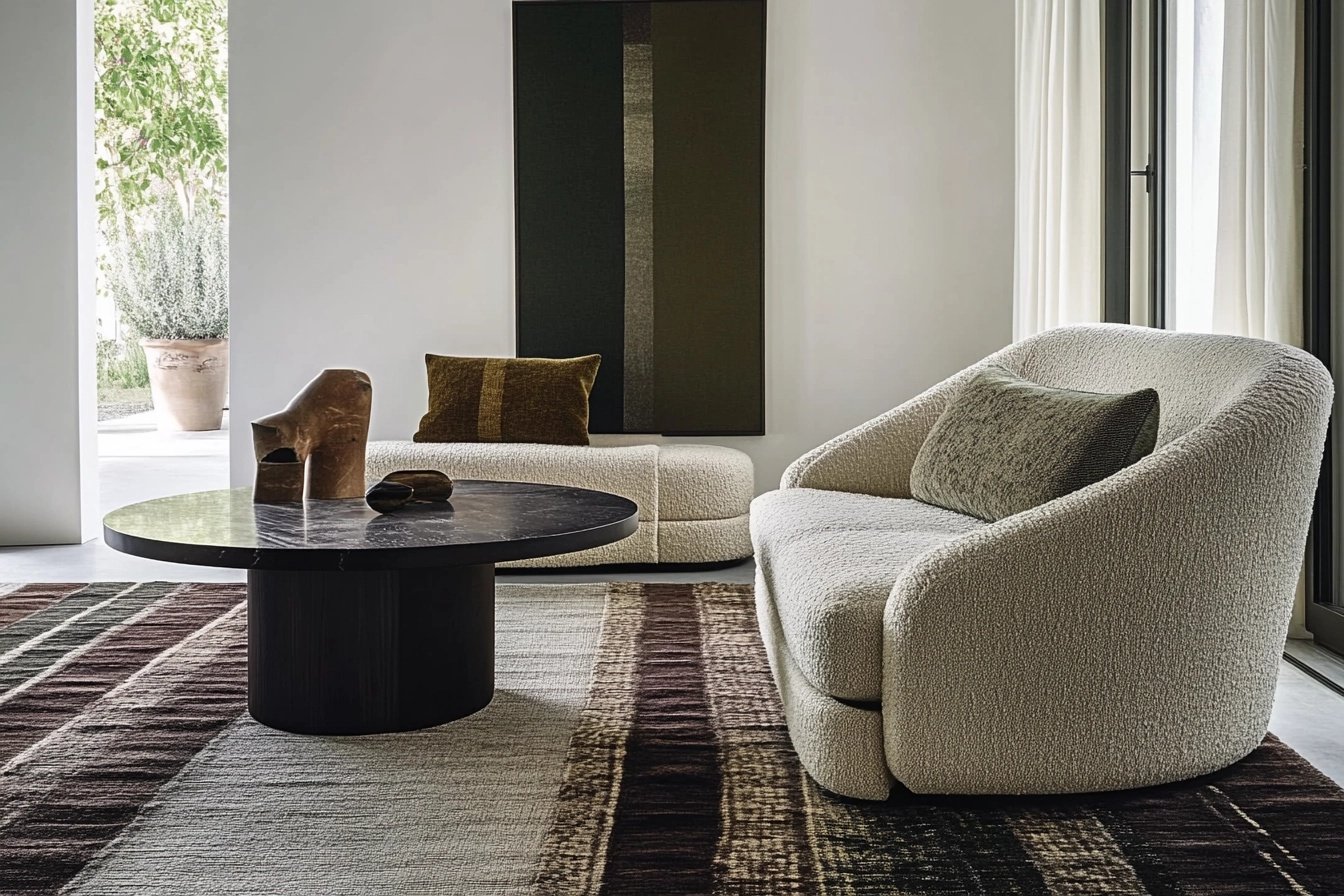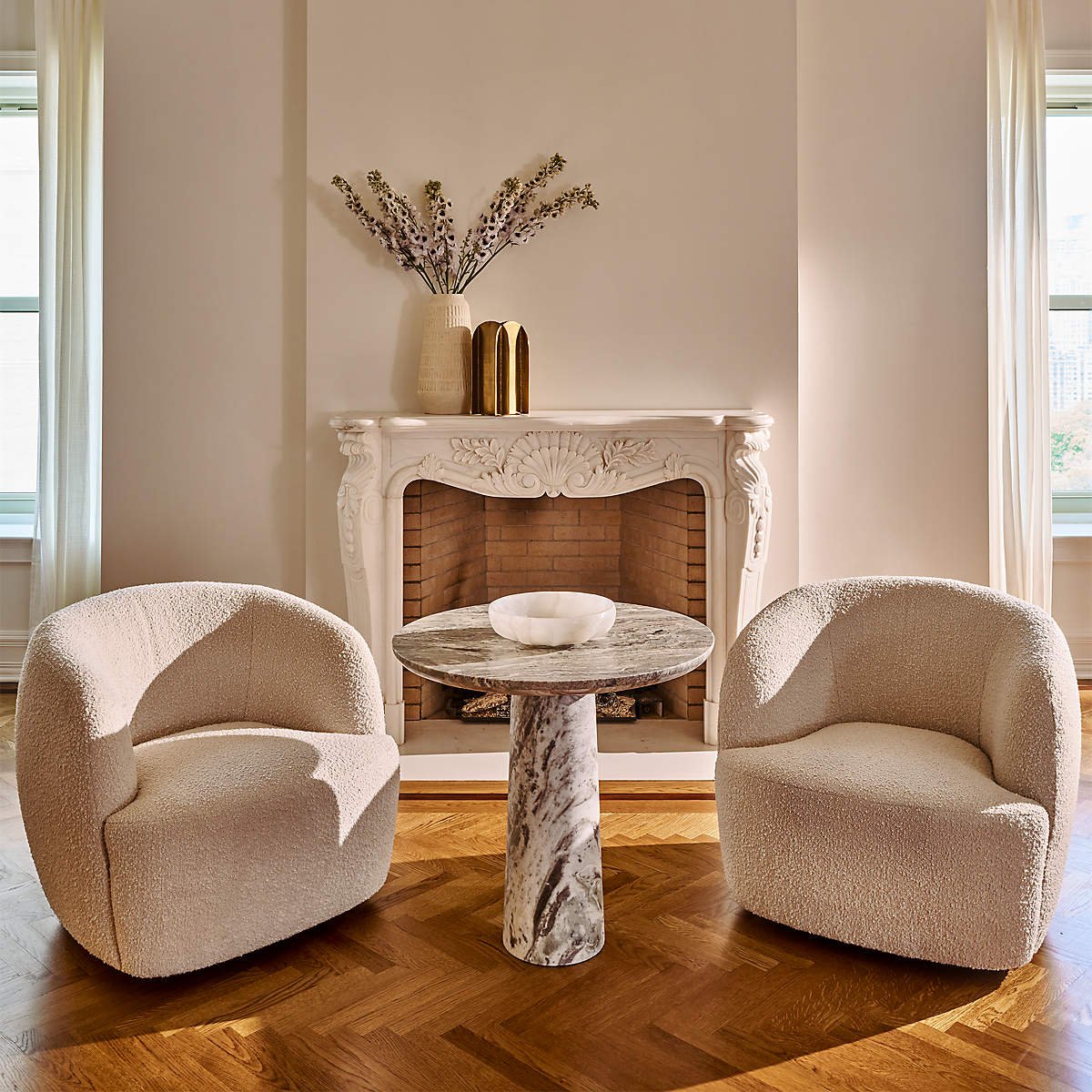Life After Boucle; What’s next in 2025
In the world of interior design, trends come and go, but few have made as significant an impact in recent years as bouclé fabric. Characterized by its soft, looped texture, bouclé became synonymous with comfort and sophistication, especially in upholstery. However, as the design landscape evolves, bouclé’s reign appears to be waning. This article explores the history of bouclé, its rise to fame, and the emerging trends poised to take center stage in 2025.
The Origins and History of Bouclé Fabric
Bouclé, derived from the French word meaning "curled" or "looped," refers to both the yarn and the fabric made from it. The material was first introduced in the mid-20th century, gaining attention for its unique texture that added a tactile dimension to furniture and textiles. Bouclé’s distinctive look is achieved by weaving together looped yarns, which create a fabric that is both visually and physically inviting.
Initially, bouclé was used sparingly in high-end fashion and interior design, often seen in the works of iconic designers like Coco Chanel, who popularized it in her famous tweed suits. The fabric’s transition into the realm of interior design came as designers sought materials that provided both aesthetic appeal and comfort, making it a staple in mid-century modern furniture design.
Regional Popularity: A Global Affection for Bouclé
Bouclé’s appeal has been widespread, but its popularity has varied across regions. In North America and Europe, bouclé became particularly trendy in the 2020s as designers and homeowners gravitated toward its cozy yet sophisticated look. The fabric’s textured appearance fit perfectly with the rise of the hygge and cocooning trends, which emphasized creating warm, inviting spaces during uncertain times.
In Scandinavia, bouclé was embraced for its ability to soften the clean lines and minimalist forms typical of Nordic design. Meanwhile, in the United States, the fabric found a place in high-end residential interiors, often used in living rooms and bedrooms to add a layer of plush comfort.
The Recent Surge in Bouclé’s Popularity
The past few years have seen bouclé rise to unprecedented heights in the world of upholstery. This surge can be attributed to several factors, not least of which was the global pandemic. As people spent more time at home, there was a growing demand for furniture that not only looked good but also felt comforting and lived-in. Bouclé, with its soft texture and inviting appearance, fit the bill perfectly.
High-profile designers and celebrities played a significant role in bouclé’s resurgence. Notable interior designers like Pierre Yovanovitch and brands such as RH (formerly Restoration Hardware) showcased bouclé in their collections, bringing the fabric to the forefront of contemporary design. Celebrities, including the likes of Gwyneth Paltrow and Kim Kardashian, also embraced the trend, featuring bouclé pieces in their homes, which were widely covered in lifestyle media.
The Decline of Bouclé: Why the Trend is Fading
Despite its recent popularity, bouclé is beginning to fall out of favor as interior design trends shift toward more durable and luxurious materials. While bouclé offers an undeniable tactile appeal, it has been criticized for its practicality—or lack thereof. The fabric’s looped texture, while beautiful, is prone to snagging and wear, making it less suitable for high-traffic areas or households with pets and children. White has been the predominant color for most retailers, which is lovely in a photo but quite a challenge with children, pets, morning coffee, or friends with red wine.
Furthermore, as the design world moves towards sustainability and longevity, materials that offer both luxury and durability are becoming more desirable. Bouclé, often seen as a trend-driven fabric, is losing ground to more resilient and sustainable options.
What’s Next: Alternatives to Bouclé for 2025
As we look toward 2025, several upholstery fabrics are set to take over where bouclé left off. These alternatives not only offer a luxurious feel but also meet the growing demand for sustainability and performance in interior design.
Velvet: Velvet has always been a symbol of luxury, and it’s making a strong comeback in 2025. Designers are gravitating toward rich, deep hues that add a sense of opulence to any room. Pierre Frey’s velvet collection, for instance, offers a stunning array of colors and textures that elevate both contemporary and traditional interiors. Velvet’s durability and timeless appeal make it an excellent choice for upholstered dining chairs, custom beds, and more.
Mohair: Another fabric gaining traction is mohair, a material prized for its durability, luster, and softness. Mohair’s resurgence is largely due to designers like Rosemary Hallgarten, whose collections showcase the fabric’s ability to add both warmth and sophistication to a space. Mohair is particularly suited for high-end upholstery, where its resilience and luxurious feel make it a top choice for living room or bedroom design.
Performance Fabrics: As the demand for practicality in design grows, performance fabrics are becoming increasingly popular. These materials, such as ultrasuede and performance velvet, offer the best of both worlds—luxurious texture and superior durability. They are ideal for households looking for furniture that can withstand daily wear in a kitchen banquet or a dining room while still exuding elegance. These fabrics are expected to dominate retail offerings, making them accessible to a broader audience.
Go Bold with Colored Boucle: If you don’t want to worry about your pets making a home on boucle furniture, boucle comes in a variety of colors that are not just white. Some colors can mask the regular wear and tear of family and pets with a same level of comfort.
The Evolution of Upholstery Trends
The rise and fall of bouclé fabric in interior design is a testament to the ever-changing nature of trends. While bouclé’s soft, textured appeal made it a favorite for a time, the shift towards more durable, luxurious, and sustainable materials signals the next phase in upholstery design. As we move into 2025, velvet, mohair, and performance fabrics are set to take the spotlight, offering homeowners and designers alike new ways to create elegant, comfortable spaces.
For those considering a refresh in their home’s interior, these emerging trends provide a perfect opportunity to invest in materials that will stand the test of time, both in terms of style and function. Whether you’re looking to reupholster a beloved piece or design custom furniture, the alternatives to bouclé are sure to inspire.
If you are curious about custom furniture or the right fabric for furniture in your home, don’t hesitate to book a design consultation to learn more.
Michael Gilbride Design creates transformative spaces for effortless leisure and lasting joy, one room at a time.
At the heart of our approach is the belief that good design is intentional, not necessarily expensive, ensuring every space is both thoughtful and charming in every detail.
With an emphasis on life enhancing interiors, we strive to create environments where charm, relaxation, and comfort converge seamlessly.
Schedule a call to elevate your lifestyle and live well through meticulously crafted design.








